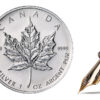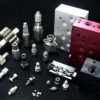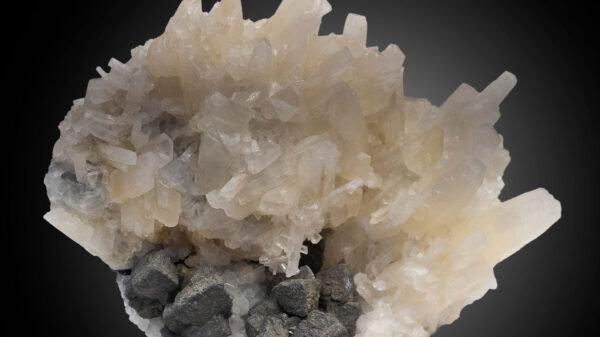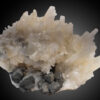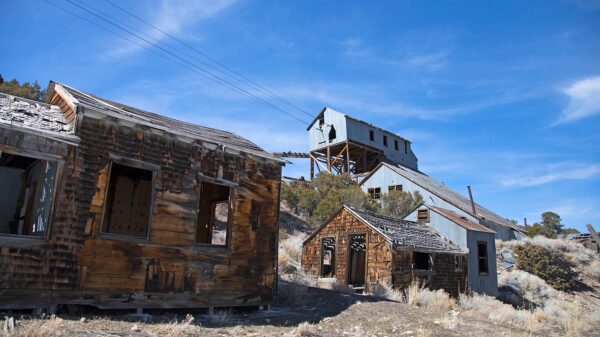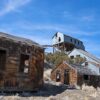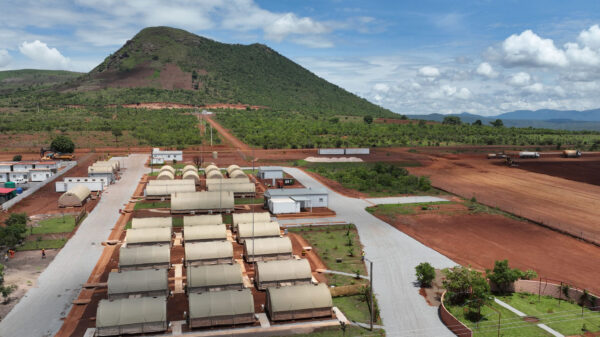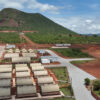At this year’s Association for Mineral Exploration (AME) Roundup in the Vancouver Convention Centre, British Columbia Premier David Eby announced the first phase of the province’s critical minerals strategy.
The premier said Monday that the province needed to support its miners on the front lines of the fight against climate change. He was at the Natural Resources Forum in Prince George last week too.
“We welcomed the premier to AME Roundup 2024, where he offered enhanced support for the mineral exploration sector through the first phase of a critical minerals strategy,” Keerit Jutla, AME President and CEO, said.
“The government’s continued investment in geoscience is key to attracting mineral exploration investment and unlocking further potential.”
The initial phase of the new strategy will involve establishing an office dedicated to advancing critical minerals projects in the province and other initiatives. There are currently about 35,000 workers in British Columbia’s mining sector.
The AME Roundup is comprised of a series of keynote talks, technical sessions, exhibits, booths, courses and networking opportunities for those involved with the mining industry.
There are a wide variety of different companies in attendance each year involved with everything from geophysical surveys, diamond drilling technology and software to prospecting, gold sales and mining different commodities.
The Premier’s decision to announce Phase I of the Critical Mineral Strategy at @AMEroundup shows the important role AME plays in facilitating conversations about the future of our industry.
Learn more: https://t.co/gi4xH1EC7A
— AME (@AME_BC) January 23, 2024
Strong national presence at the event
The conference featured a series of booths representing the mining industry in provinces like Ontario, New Brunswick and Newfoundland.
Newfoundland prospector and former banker Wayde Guinchard was at the event to interact with potential buyers and partners for his mineral properties. He is president of the private company Big Score Resources.
Guinchard says the province has been experiencing a modern-day gold rush.
“We’ve had a lot of success in central Newfoundland and I think we’re only scratching the surface,” he said. “There will be more discoveries to come.”
Central Newfoundland recently had its first-ever major investment from an international mining company. The Nicaragua, Nevada and Atlantic Canada gold producer Calibre Mining Corp. (TSX: CXB) (OTCQX: CXBMF) just completed its acquisition/merger with the local operator Marathon Gold Corp. (TSX: MOZ).
Aside from gold, Guinchard said Newfoundland had immense potential to supply other commodities.
“I think we got great potential for uranium and rare earths, I really do,” he said. “There’s so much ground that hasn’t been staked with no major players to take it on and take it to the next level yet.”
Guinchard received three grants from Newfoundland’s government in 2018 worth more than C$14,750 for his prospecting work. The province invested a total of C$1.8 million to develop its mining industry that year.
There was a Prospectors’ Tent at the conference where independent miners had the opportunity to present their discoveries.
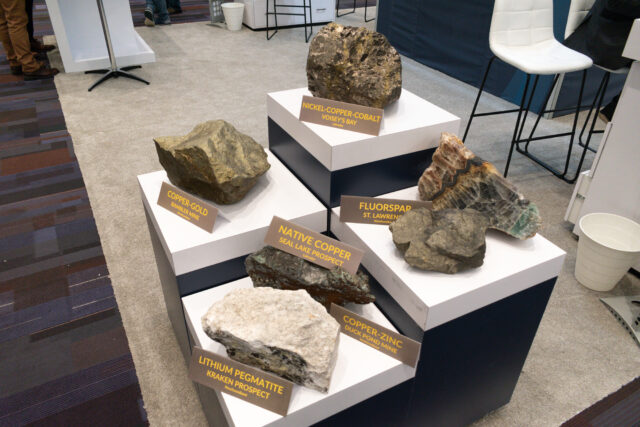
Newfoundland & Labrador minerals on display. Photo: Rowan Dunne
Read more: Calibre Mining sets gold production record in 2023, reports 52% cash balance increase
Read more: Calibre Mining’s merger with Marathon Gold deemed ‘tremendous opportunity’
Rare earths mining helps propel provincial economy
Kris Raffle, a geologist with Defense Metals Corp. (TSX-V: DEFN), was there discussing rare metals as well. The company recently entered a partnership with McLeod Lake Indian Band for joint development of the Wicheeda rare earth elements operation in central B.C.
“I think we’re seeing a lot more interest in the Wicheeda deposit in particular and rare earths in general,” Raffle said.
Despite Canada’s efforts to minimize reliance on China for rare earths and critical minerals, Defense Metals still has to send neodymium and praseodymium from its project there for further processing. The Asian nation is a major influence in the industry.
“We’re hopeful that the North American downstream will catch up to this project and we will be able to keep separation and ultimately magnet-making within our own continent,” Raffle said.
The company’s CEO Craig Taylor spoke at the event’s opening ceremony.

Rare earth-bearing core samples from Wicheeda on display at the Defense Metals booth. Photo: Rowan Dunne
Read more: BC First Nations group invests in Defense Metals, partners to advance Wicheeda rare earths project
Read more: Energy Fuels and Astron Corp to develop ‘world-class’ Australian rare earth deposit
Event attracts diverse industry leaders
Other notable presentations at the AME Roundup included a Government-Industry Forum about critical minerals on Monday and the BC Regional Mining Alliance Session on Tuesday.
Notable speakers from the forum included Peter Wijtkamp, Executive Director at the Ministry of Energy, Mines and Low Carbon Innovation; Michael Goehring, CEO of the Mining Association of BC; and Chief Byron Louis from the First Nations Energy and Mining Council.
Thursday’s schedule included a technical session on mining in BC, Yukon and Alaska; an Indigenous marketplace that ran for 4.5 hours; and a short course titled “Gold-Rich Porphyry Deposits.” It was taught by David Cooke, Director of the University of Tasmania’s Centre for Ore Deposit and Earth Sciences.
There were mining companies with more distant operations present at the event too. K92 Mining Inc. (TSX: KNT) (OTCQX: KNTNF) had some rather impressive-looking core samples on display from its Kainantu gold mine in Papua New Guinea. The AME Roundup featured a Core Shack where various companies displayed their intercepts.
The event concluded with a closing ceremony and close of the TMX Group Ltd (TSX: X) exchanges.
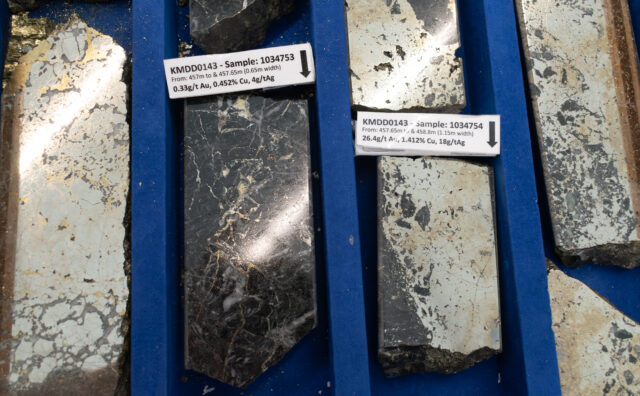
A favourable 26.4 g/t gold in the centre right sample from Papua New Guinea. Photo: Rowan Dunne
Calibre Mining is a sponsor of Mugglehead news coverage
rowan@mugglehead.com



